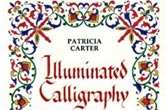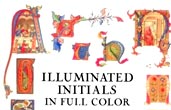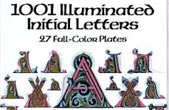![]()
One of the results of the dialogue with Rick is that I've got several new mediaeval and renaissance writing manuals, which are not only just lovely to have but also provide lots of starting points for new fonts.
I guess I had a fairly rich collection already, but there are always gaps; I found some things I knew about but hadn't been able to get before, like George Bickham's Penmanship Made Easy from 1733, and some that had been on my 'wish list' for ages:
 |
 |
 |
|
| George Bickham, 1733 |
Patricia Carter, 1989 |
Carol Belanger Grafton, 1995 |
Owen Jones, 1864, R/1988 |
Rick suggested some things I hadn't previously come across, like Dover's extraordinary collection of Three Classics of Italian Calligraphy: it seems to be out of print (why on earth don't they reprint it???) but there were still half-a-dozen used copies available at affordable prices when I looked. These are the three classics:
Ludovico Vicentino [degli Arrighi], La ARTE di scrivere littera Corsiva ouer Cancellarescha, and Il modo de temperare le Penne, in Roma 1522-1557 ('The art of writing italic or chancery letters', and 'How to temper your quills').
Vicentino gives a lot of variations on the basic corsivo hand, and a whole range of delightful decorated capitals.
Giovanniantonio Tagliente, La Vera arte delo Excellente scriuere varie sorte de litere, 1523-1568 ('The True art of Excellently writing various kinds of letters').
Tagliente would surely survive well in an internet context, with his claim that "Con La Presente opera ognuno Le Potra Imparare impochi giorni ..." ('with the present work everyone can learn in a few days'); and he has an eye to universalism, though his readers have to manage with a single alphabet which 'serve a persi harabi aphricani turchi & tartari'.
With three times as much material as the other two authors, Palatino deals with spacing, proportions and tools, and is well on course towards Unicode with his separate alphabets for French, Spanish, Lombard, Greek, Cyrillic, Hebrew, Sirian, Saracen, Egyptian, Indian, Arabic, Chaldean ...
 |